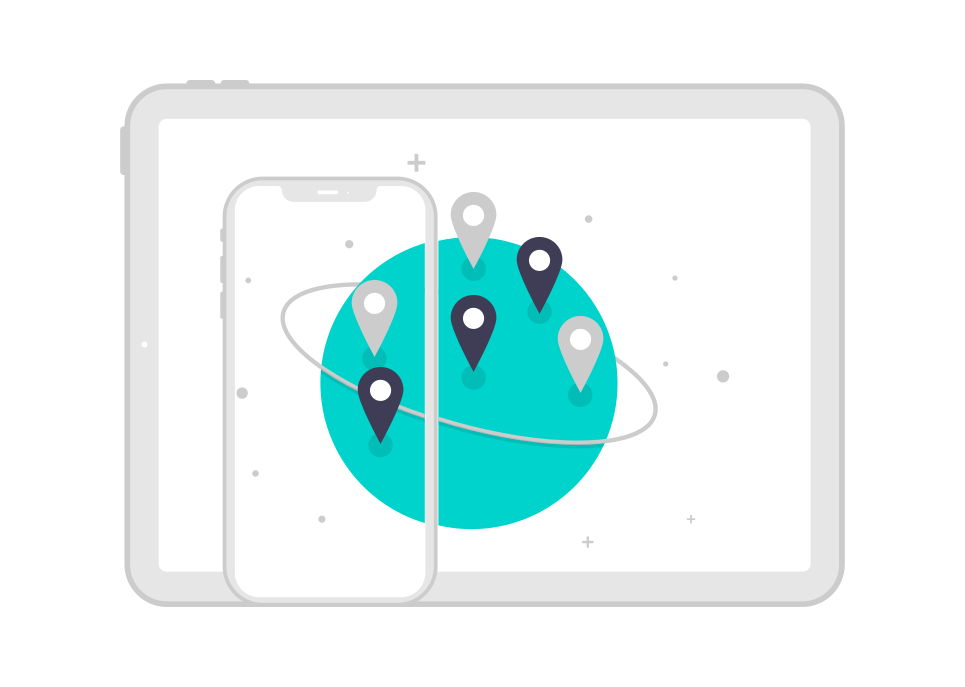
When deciding on your localization languages, knowing the most used ones can be helpful. It allows you to identify which markets have a large online audience, indicating who could benefit from localization. In addition, this data can help you prioritize your target markets based on online user base size.
Statista provides us with insights on the most used languages on the internet by share of websites. While you would be right to assume that English is dominant online, other languages stand out too. Unsurprisingly, we spotted many of the languages our clients localized their content into.
English (52.1%)
English stands as the undisputed global bridge language, dominating the internet with 52.1% of websites offering content in this language. It has approximately 1.5 billion speakers worldwide and serves as the primary or secondary language in over 100 countries, including the United States, United Kingdom, Canada, Australia, and India. Its widespread usage stems from its status as the language of international business, science, technology, and popular culture.
Spanish (5.5%)
Spanish, with 5.5% of websites, holds significant influence online, reflecting its status as the second most spoken language globally. Over 580 million people speak Spanish, predominantly in Spain and across Latin America, including Mexico, Argentina, and Colombia. Its presence on the internet underscores its cultural and economic importance, particularly in regions experiencing rapid digital growth.
German (4.8%)
German, found on 4.8% of websites, serves as a major language of commerce, science, and culture in Europe. With around 100 million speakers, primarily in Germany, Austria, and Switzerland, German is pivotal in sectors such as engineering, automotive industries, and academic research. Its digital footprint mirrors Germany’s technological prowess and the economic strength of German-speaking countries.
Russian (4.5%)
Russian claims 4.5% of online content, reflecting its status as one of the most used languages on the internet. With about 260 million speakers, it is the largest native language in Eurasia, encompassing Russia, Belarus, Kazakhstan, and others. Russian is essential for accessing markets in Eastern Europe and Central Asia, making it a vital language for global businesses and cultural exchange online.
Japanese (4.3%)
Japanese, appearing on 4.3% of websites, serves a critical role in the digital landscape due to Japan’s technological advancements and cultural exports. With over 120 million speakers, mainly in Japan, Japanese is crucial for accessing one of the world’s most developed online markets. Its unique writing system that employs three scripts makes Japanese content distinctive… but also quite hard to translate.
French (4.3%)
French, present on 4.3% of websites, reflects its status as a global language of diplomacy, culture, and business. It’s spoken by approximately 320 million people worldwide, predominantly in France, Canada, Belgium, and several African nations. French enjoys significant digital presence due to its influence in arts, fashion, and international organizations like the United Nations and European Union.
Portuguese (3.1%)
Portuguese, found on 3.1% of websites, serves as the primary language in Portugal, Brazil, and several African nations. Over 260 million people speak Portuguese, which is why it’s an important language for accessing fast-growing markets in Brazil and Lusophone Africa. Its online presence highlights its role in global trade, cultural exchange, and the digital economy.
Italian (2.3%)
Italian, appearing on 2.3% of websites, reflects Italy’s cultural and historical significance. With around 70 million speakers, it’s the official language of Italy and San Marino, with a significant presence in Switzerland. Italian is pivotal for industries such as fashion, design, and automotive manufacturing. Its digital usage underscores Italy’s contributions to arts, cuisine, and technological innovation.
Turkish (2.1%)
Turkish, found on 2.1% of websites, serves as a bridge between Europe and Asia, reflecting Turkey’s growing digital economy and cultural influence. It has approximately 75 million speakers, and this makes Turkish vital for accessing markets in Turkey and Central Asia. Its digital footprint mirrors Turkey’s strategic location and economic growth.
Dutch, Flemish (1.8%)
Dutch and Flemish, appearing on 1.8% of websites, represent the Netherlands and Belgium’s linguistic diversity… and high internet penetration rates. With about 25 million speakers, Dutch is essential for accessing affluent markets in the Benelux region. The Netherlands is known for its innovation in technology. Dutch tech companies and startups often develop content in Dutch, thus contributing to the language’s significant online presence.
The dynamic linguistic landscape
As the internet continues to evolve, so too will the linguistic landscape. If you’re a business, adapting to these changes by providing content in a diverse array of languages will be key to reaching new audiences. English will surely stick around as a leading language, but moving forward, it should be interesting to see if there will be any changes when it comes to the runners up. Stay competitive by keeping up with the most used languages on the internet and ensuring that your content is accessible and impactful across different regions.